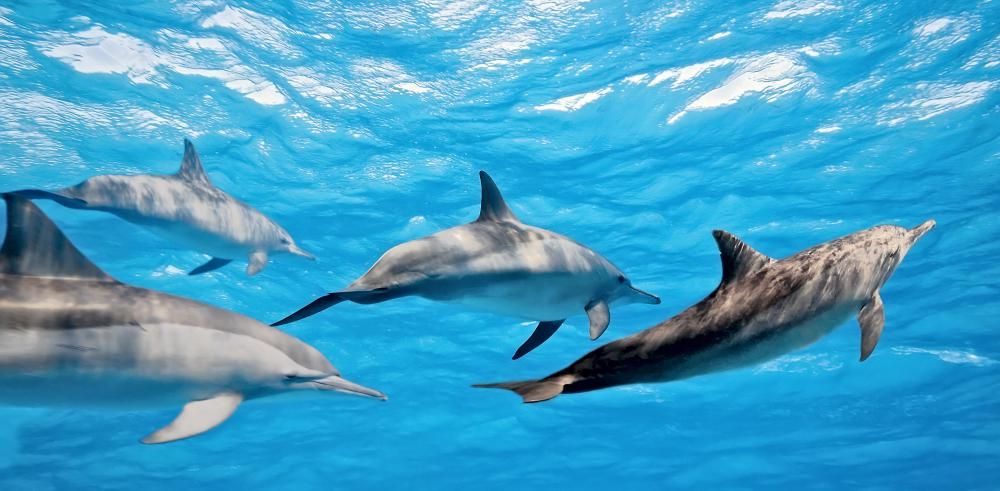At AllThingsNature, we're committed to delivering accurate, trustworthy information. Our expert-authored content is rigorously fact-checked and sourced from credible authorities. Discover how we uphold the highest standards in providing you with reliable knowledge.
What Is Dolphin Conservation?
A large number of ocean-dwelling animals feel the impact of humans as these animals struggle to survive in the face of over-fishing and habitat destruction. This is true of many different species, including various types of dolphins. To save these animals and to ensure they will thrive in the future, many groups of people work for dolphin conservation. These organizations strive to protect both dolphins and their aquatic environment.
One significant step towards dolphin conservation was the enactment of the Marine Mammal Protection Act (MMPA) by the United States in 1972. This act provided for the protection of all marine mammals in U.S. waters. This act not only makes it illegal to harm marine mammals, it also prohibits harassing, touching or approaching them in the wild. This helps to ensure that dolphins and other marine mammals can live freely and safely in the waters around the United States.

The MMPA does not extend beyond U.S. territorial waters. There are other organizations that work for dolphin conservation and for the protection of whales and all marine mammals in international waters. The International Whaling Commission (IWC) exists to protect whales as a worldwide natural resource, but it also tries to identify and resolve threats to other cetaceans, including dolphins.

The International Union for the Conservation of Nature and Natural Resources (IUCN) is a large, international group. This organization operates various projects aimed at working with fishermen and coastal dwellers to help to preserve different marine species. One important undertaking has been to reduce the number of deaths of dolphins due to entanglement in commercial fishing nets.
Human use of areas that dolphins also use for hunting, breeding and resting represents a threat to the animals’ habitat. Even when the problems are unintentional, dolphins and other marine mammals are injured and sickened by such things as boat propellers, sewage and oil spills. Noise from various human activities can also interfere with the normal lives of marine mammals. This is especially true of dolphins and whales that depend on their sonar systems to survive.
Groups that advocate dolphin conservation insist that humans must reduce or eliminate the disruptions to the marine environment in order to allow the animals to live more normally. When they are injured, unable to hunt or unable to rest properly, the numbers of marine mammals begin to decrease. If these animals are to survive the humans of many countries, not just a few, will need to take dolphin conservation seriously and work to protect them.
Frequently Asked Questions
What is dolphin conservation and why is it important?
Dolphin conservation refers to the efforts to protect and preserve dolphin populations and their habitats. It's crucial because dolphins play a significant role in marine ecosystems as both predators and indicators of ocean health. Moreover, they face threats from bycatch, habitat loss, pollution, and climate change. Protecting dolphins also safeguards biodiversity and helps maintain the balance of marine environments.
What are the main threats to dolphin populations worldwide?
The primary threats to dolphins include entanglement in fishing gear (bycatch), habitat degradation, marine pollution, and climate change. According to the World Wildlife Fund, thousands of dolphins die each year as unintentional bycatch. Additionally, noise pollution from ships and industrial activities can disrupt their communication and navigation, leading to strandings and death.
How can individuals contribute to dolphin conservation efforts?
Individuals can contribute to dolphin conservation by supporting eco-friendly fisheries, reducing plastic use to prevent ocean pollution, and participating in beach clean-ups. Educating oneself and others about the importance of dolphins and the threats they face is also vital. Choosing responsible dolphin-watching tours that do not disturb the animals can further aid conservation efforts.
What role do protected areas play in dolphin conservation?
Marine protected areas (MPAs) are crucial for dolphin conservation as they provide safe havens where dolphins can feed, breed, and raise their young away from human threats. MPAs have been shown to increase marine biodiversity and abundance, which includes cetaceans like dolphins. These areas can help populations recover and ensure long-term survival.
How do conservationists monitor dolphin populations?
Conservationists monitor dolphin populations using a variety of methods, including boat surveys, aerial surveys, and acoustic monitoring. Photo-identification, where individual dolphins are recognized by their unique dorsal fin notches and scars, is also widely used. These methods help researchers track population sizes, health, and behavior, informing conservation strategies and policy decisions.
What are some success stories in dolphin conservation?
One notable success story is the recovery of the humpback dolphin population in Hong Kong after the construction of the Hong Kong-Zhuhai-Macau Bridge. Conservation measures, including rerouting shipping lanes and establishing marine parks, have led to a rebound in numbers. Globally, conservation efforts have also helped improve the status of various dolphin species, demonstrating that targeted actions can yield positive results.
AS FEATURED ON:
AS FEATURED ON:












Discuss this Article
Post your comments